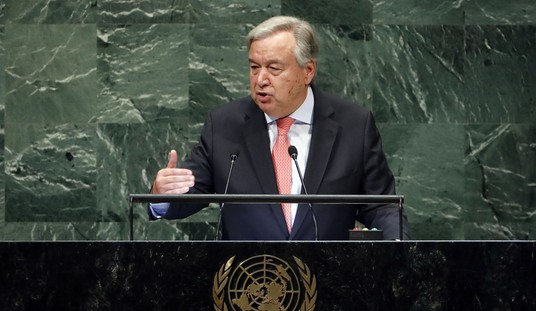“Sunday Reflection” is a regular feature, looking at the specific readings used in today’s Mass in Catholic parishes around the world. The reflection represents only my own point of view, intended to help prepare myself for the Lord’s day and perhaps spark a meaningful discussion. Previous Sunday Reflections from the main page can be found here. For previous Green Room entries, click here.
This morning’s Gospel reading is John 6:24–35:
When the crowd saw that neither Jesus nor his disciples were there, they themselves got into boats and came to Capernaum looking for Jesus. And when they found him across the sea they said to him, “Rabbi, when did you get here?” Jesus answered them and said, “Amen, amen, I say to you, you are looking for me not because you saw signs but because you ate the loaves and were filled. Do not work for food that perishes but for the food that endures for eternal life, which the Son of Man will give you. For on him the Father, God, has set his seal.”
So they said to him, “What can we do to accomplish the works of God?” Jesus answered and said to them, “This is the work of God, that you believe in the one he sent.” So they said to him, “What sign can you do, that we may see and believe in you? What can you do? Our ancestors ate manna in the desert, as it is written: He gave them bread from heaven to eat.” So Jesus said to them, “Amen, amen, I say to you, it was not Moses who gave the bread from heaven; my Father gives you the true bread from heaven. For the bread of God is that which comes down from heaven and gives life to the world.”
So they said to him, “Sir, give us this bread always.” Jesus said to them, “I am the bread of life; whoever comes to me will never hunger, and whoever believes in me will never thirst.”
Yesterday, my wife and I attended the wedding of a friend’s son, a beautiful event that took place at the cathedral in St. Paul. Later, at the reception, we enjoyed the company of other friends while we broke bread with the entire community. The best man, the brother of the groom, offered a long and engaging toast, starting off as a bit of a roast but finishing as a prayer. Among the blessings in this loving, fraternal toast was this, which is not quite a quote but the best I can do from memory: May the Lord Jesus Christ, whose first miracle was at the wedding feast of Cana, turn your water into wine when the wine runs low in your marriage … At the end of your life, with your children, grandchildren, and great-grandchildren around you, may we all meet again at the Wedding Feast of the Lamb. The toast emphasized the central role of Jesus in marriage as part of His plan for a community.
As with most wedding feasts, the food and fellowship was plentiful. We were nourished as we nourished the celebration itself with our joy for the happy couple and their families. It was a communion of a large community, even though many of us present had never met one another. We did not come for the food, but instead we came for another kind of nourishment — the kind of nourishment to which Christ refers in this Gospel reading.
This passage from John provides a mirror of the first reading from Exodus. The Israelites, freed from bondage after 400 years, had grown angry and weary of struggling to survive on their own. Instead of placing their trust in the Lord who had rescued them from slavery, they began to reject Him and wax nostalgic for their slavemasters. The Lord had asked them to gather in communion as a nation that would give light to the world and glory to His name, but instead they rebelled in spirit against Moses and Aaron, and the Lord.
What did God do? He could have abandoned the Israelites in the desert, but instead He fed them with quail, and then manna — bread. We find out shortly after this passage that manna was food for only a short period of time; it could not be stored except the day before Sabbath, but had to be eaten immediately. That meant that everyone needed to gather together and presumably eat together, as a community. In order to gather His people back into communion, the Lord provided the bread as both physical and spiritual sustenance.
Jesus does the same with the miracle of the loaves and fishes. In the previous passage, Jesus had given the multitude bread in a miraculous manner, making sure they had the physical sustenance needed to remain in communion with Him and the disciples. The next day, the crowd remained and sought out Jesus, who explained that food perishes, but the Lord is eternal, and that His bread will sustain them forever, and that they must have faith in Jesus. The crowd draws the parallel to manna, and Jesus reminds them that the manna came from the Lord, as does the true bread, Jesus Himself. This time, Jesus makes clear that it is the spiritual food that matters, which will be shared in community, and that the bread of God will thus give life to the world.
We recreate this blessing at wedding feasts, whether we do so intentionally or not. Anyone who has gone through the planning of a wedding knows that the arrangements become complicated, and that in almost any scale there will be a significant number of people who are unfamiliar to us. Those of us who attend weddings of friends will usually find ourselves far outnumbered in that sense, but even when we are the happy couple or the parents of the newly wed, we spend most of the day in communion with people we hardly know. However, we all feel the joy of the sacramental union, a parallel of the love of Christ for His church.
Few come strictly for the food. We come to share in that joy, to celebrate a triumph of love and commitment, as a community. We break the bread, and let ourselves be broken and renewed by it, just as we do at Mass, and just as we do as members of the church as a whole. And may we all, at the end of a long life filled with love, surrounded by our children, grandchildren, and great-grandchildren, pass quietly out of this life to meet again in love at the wedding feast of the Lamb, where we will partake once more of the True Bread.
And while we are at it, may we also pray for the happiness and strength of the newlyweds, Anthony and Elizabeth, and for the love and support of their families.
The front page image is a detail from Giovanni Lanfranco’s “Miracle of the Bread and Fish,” 1620-23.








Join the conversation as a VIP Member